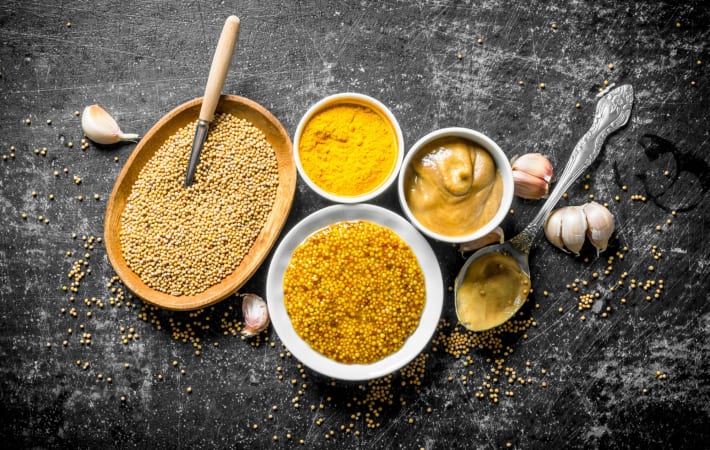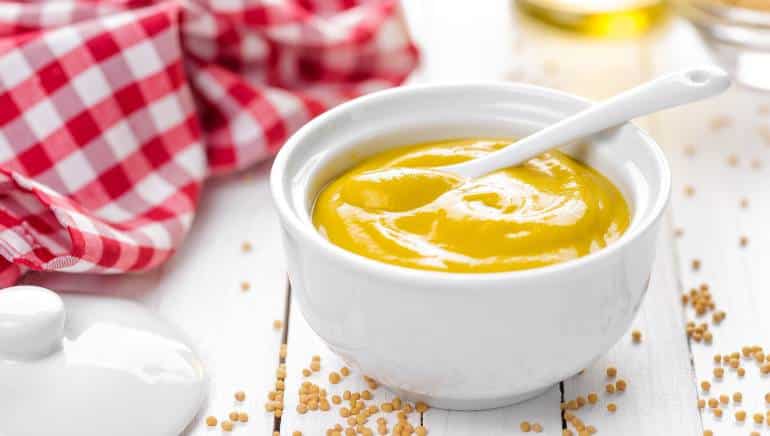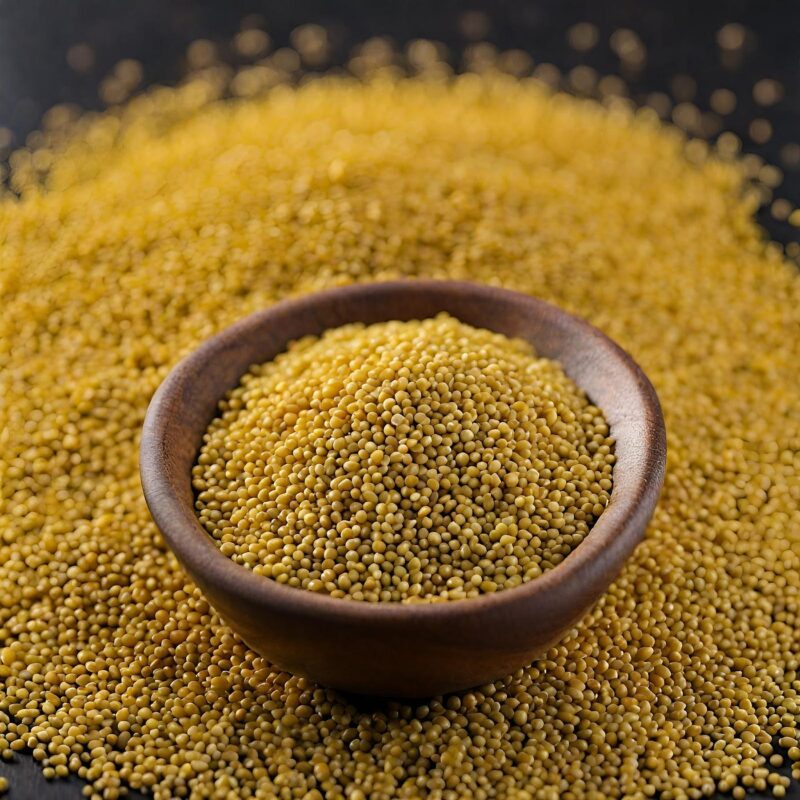Blog
What spices go with mustard seeds?

The culinary world is a rich tapestry of flavors, and among the myriad spices that grace our kitchens, mustard seeds stand out as a versatile and distinctive ingredient. When it comes to pairing spices with mustard seeds, the possibilities are as diverse as the cuisines they enhance. Mustard seeds, known for their earthy, pungent flavor, can be complemented and elevated by a range of spices, creating harmonious blends that tantalize the taste buds.
In the realm of Indian cuisine, mustard seeds often share the stage with cumin seeds, creating the dynamic duo of tempering, known as tadka or tarka. The crackling sound of mustard seeds in hot oil, followed by the warm aroma of cumin, forms the aromatic base for countless curries, dals, and vegetable dishes. The earthiness of cumin beautifully balances the pungency of mustard seeds, resulting in a flavor profile that is foundational to many Indian recipes.
Coriander seeds, with their citrusy and slightly sweet notes, frequently join forces with mustard seeds in Indian spice blends. Whether ground together for curry powders or combined in whole form for pickling spice mixtures, the pairing of coriander and mustard seeds creates a delightful synergy. The aromatic warmth of coriander complements the assertive kick of mustard seeds, contributing to the complexity of flavor in dishes like pickles and curries.
Moving westward, into Middle Eastern cuisine, mustard seeds find companionship with spices like cumin, coriander, and fennel seeds. The trio of cumin, coriander, and mustard seeds forms the backbone of many spice blends in Middle Eastern cooking, infusing dishes with layers of warmth and depth. Fennel seeds, with their subtle anise-like flavor, add a sweet and aromatic component that complements the boldness of mustard seeds, creating a nuanced harmony in spice blends used for meat rubs and rice dishes.
In the Mediterranean region, the marriage of mustard seeds and thyme is a classic pairing that imparts a distinctive herbaceous quality to various dishes. The earthy, slightly peppery notes of mustard seeds meld seamlessly with the aromatic, floral tones of thyme, enhancing the flavor of roasted vegetables, grilled meats, and marinades. This pairing is a testament to how spices with different profiles can come together to create a cohesive and well-balanced culinary experience.
Mustard seeds also find a place in the spice racks of Southeast Asian cuisines, where they often team up with spices like fenugreek and cumin. In curry pastes and spice blends for dishes like masaman curry in Thai cuisine, the combination of mustard seeds, fenugreek, and cumin contributes to the intricate layers of flavor that define these regional specialties. The bitter and slightly nutty notes of fenugreek complement the sharpness of mustard seeds, while cumin adds a warm and earthy undertone.
In the context of North African cuisine, mustard seeds often mingle with spices like coriander, cumin, and caraway seeds. These spices converge to create the aromatic foundation for dishes like couscous and tagines. The combination of coriander’s citrusy brightness, cumin’s warmth, and caraway’s anise-like flavor enhances the piquancy of mustard seeds, resulting in spice blends that are essential to the vibrant and diverse culinary landscape of North Africa.
In European cuisines, mustard seeds play a starring role in the preparation of the condiment we know as mustard. Often combined with vinegar, salt, and other spices, mustard seeds are ground to create a piquant paste that adds zing to sandwiches, dressings, and marinades. Commonly paired with spices like garlic, turmeric, and paprika, mustard seeds contribute to the complex and robust flavor profiles of various mustard varieties found across European culinary traditions.
Mustard seeds also find synergy with the warm and peppery notes of black pepper in both Indian and global cuisines. The combination of freshly cracked black pepper and the distinctive heat of mustard seeds adds depth and complexity to spice blends used for rubs, marinades, and pickling solutions. This pairing is a testament to how contrasting spices can enhance each other, creating a sensory symphony that elevates the overall culinary experience.
In the world of pickling, mustard seeds often find themselves in the company of spices like dill, coriander, and cloves. The dill’s herbal freshness, coriander’s citrusy brightness, and the sweet warmth of cloves complement the pungency of mustard seeds, creating a delightful medley of flavors that infuses pickled vegetables and fruits with a distinctive taste. This combination is particularly prominent in European-style pickles, where the interplay of these spices defines the characteristic tangy and aromatic profile.
In South Asian spice blends, mustard seeds frequently pair with fenugreek seeds to create a potent combination known as panch phoron. This blend, consisting of equal parts mustard seeds, fenugreek seeds, cumin seeds, fennel seeds, and nigella seeds, is a staple in Bengali cuisine. The unique aspect of panch phoron lies in the equal proportion of each seed, resulting in a balanced and aromatic spice blend that imparts a signature flavor to various dishes, from vegetables to lentils.
The combination of mustard seeds with spices like ginger and garlic forms a dynamic trio in many culinary traditions, particularly in Asian cuisines. Ginger’s warm and slightly spicy notes, coupled with the savory undertones of garlic, complement the pungency of mustard seeds. This trio is commonly featured in stir-fries, marinades, and sauces, infusing dishes with a robust and aromatic flavor profile. The synergy of ginger, garlic, and mustard seeds is a hallmark of Asian cooking, contributing to the bold and complex tastes that define dishes like ginger garlic chicken or mustard seed-infused stir-fried vegetables.
Mustard seeds also pair exceptionally well with aromatic spices such as cardamom and cinnamon. In both sweet and savory applications, this combination creates a delightful blend of warm, slightly sweet, and pungent flavors. The earthy notes of mustard seeds harmonize with the floral and spicy nuances of cardamom, while cinnamon adds a touch of sweetness and warmth. This trio is often found in spice mixes for biryanis, curries, and even desserts, showcasing the versatility of mustard seeds in creating well-rounded and intriguing flavor profiles.
For a more adventurous palate, the combination of mustard seeds and fenugreek seeds introduces a bold and slightly bitter note. Fenugreek’s distinct flavor, often described as nutty and reminiscent of maple, complements the robust pungency of mustard seeds. This pairing is commonly featured in spice blends for pickles, lentil dishes, and curry pastes, contributing to the complexity of flavors and adding a unique depth to various dishes.
When exploring the spice world of Latin American cuisine, mustard seeds find compatibility with cumin, oregano, and chili peppers. The warmth of cumin, the herbal brightness of oregano, and the fiery kick of chili peppers create a trio that enhances the flavor of sauces, marinades, and spice rubs. This combination is especially prominent in Mexican and South American cuisines, where the interplay of these spices brings depth and intensity to dishes like chili con carne, adobo sauces, and grilled meats.
In the realm of spice blends used for baking, mustard seeds may find themselves paired with aromatic spices like nutmeg and cloves. This combination is prevalent in certain European breads and pastries, where the warmth of nutmeg, the sweet-spicy notes of cloves, and the pungency of mustard seeds come together to create a complex and enticing flavor profile. This demonstrates how mustard seeds, typically associated with savory dishes, can transcend culinary boundaries and contribute to the nuanced tastes of baked goods.
Mustard seeds also harmonize with the zesty and citrusy notes of lemon and lime. In Indian cuisine, for example, mustard seeds are often paired with curry leaves and lime or lemon zest during the tempering process, imparting a burst of freshness and brightness to dishes. This combination is not only visually appealing but also elevates the overall sensory experience, particularly in lentil-based dishes and vegetable preparations.
For those seeking a bold and smoky flavor profile, mustard seeds can be paired with smoked paprika or chipotle peppers. The smokiness of these spices complements the pungency of mustard seeds, creating a rich and savory combination. This pairing is particularly popular in barbecue rubs, marinades for grilled meats, and dishes where a hint of smokiness adds depth and complexity.
In the context of herbal pairings, mustard seeds can be combined with basil, cilantro, or parsley to create vibrant herb-infused spice blends. This combination is well-suited for fresh salsas, herbaceous marinades, and dishes where the bright and aromatic qualities of herbs complement the boldness of mustard seeds. The result is a fusion of herbal freshness and pungent warmth that enhances a variety of culinary creations.
In conclusion, the pairing of mustard seeds with other spices is a testament to the artistry of culinary creation. Whether in the intricate spice blends of Indian cuisine, the bold rubs of Middle Eastern grills, or the vibrant pickles of European kitchens, mustard seeds harmonize with an array of spices to craft flavors that delight the palate. This diverse and global interplay of spices showcases the universality of mustard seeds, transcending culinary borders and contributing to the rich mosaic of flavors that define our shared gastronomic heritage.
FAQ:




